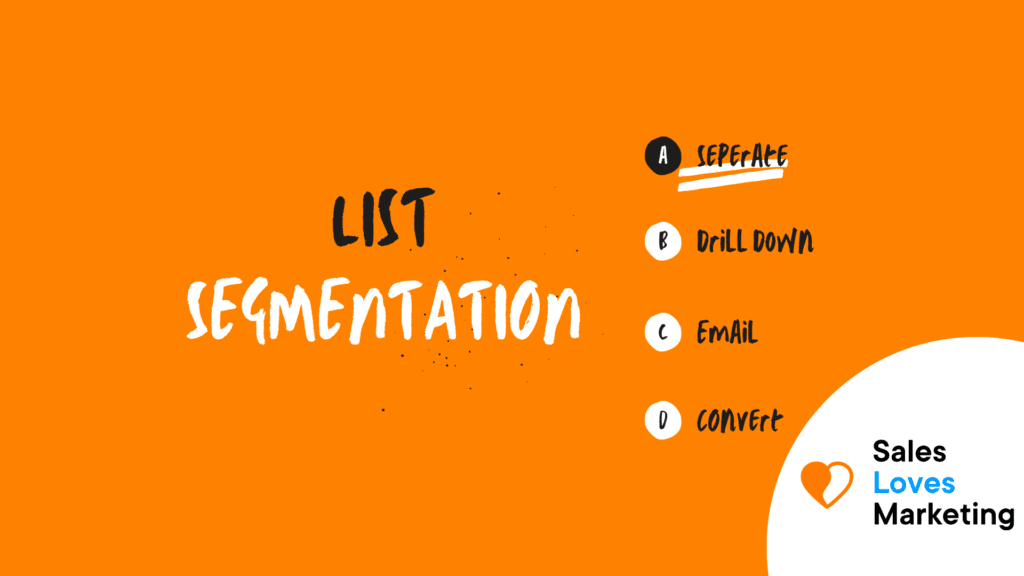What is List Segmentation?
List segmentation is a marketing practice that consists of dividing lists of people into smaller parts to send them personalized content at the most opportune time with the purpose of converting them into customers.
Lists can be segmented by the information people have entered in forms such as geographic location, preferences, age, lifestyle, etc., or by specific interactions, such as clicks, views, among many other factors.
List segmentation can be used in any marketing activity that focuses on a list of contacts.
Why should you Segment your List?
In marketing, the main purpose is to understand customers and approach them to guide them to choose a product or service.
One of the strategies that take part when it comes to achieving empathy with people is to divide or segment your contact list forming small groups with similarities to provide them with relevant information at the right time.
With this, you can achieve:
- Analyze the messages that give the best results.
- Identify which type of customers have a better reaction to your proposals.
- Detect those areas where your investment is not working.
- Reach similar audiences and capture new audiences.
- Draw attention to your brand and achieve more conversions.
- Increase sales and increase return on investment (ROI).
How do I segment an Email List?
Nowadays, there are many effective creative ways to segment an email list in digital marketing.
First of all, you must take into account that not all cases are the same; they differ in the size of the organization, type of industry, what is the product or service you offer, what will be the audience to whom you will direct the information, what message you want to convey, what is the purpose of the campaign, among others.
Some useful and effective ideas to do so are the following:
- Geographic location.
- Demographics such as age, gender, job, income level, etc.
- Purchase history: purchases made, purchase interests, frequency, cycle, shopping cart abandonment, changes in purchase behavior, level of satisfaction, comments, referred customers, etc.
- Web browsing behavior: page views, click-throughs, etc.
- Content topic and format.
- Type of email.
- Stage of the sales cycle.
- In the case of B2B business models, emails can be segmented according to the type of organization (non-profit organizations, e-commerce, etc.), industry sector, job function, level of seniority, etc.
Once you have analyzed all the available information, you can proceed to segment your email list to provide your contacts with content that is relevant to them.
In summary, the ways to segment an email list are unlimited; the more information you have about your contacts, the more chances you will have to increase open and click-through rates and generate more revenue.
Email List Segmentation Best Practices.
Some easy and effective practices when segmenting an email list are the following:
- Choose an appropriate email tool to make segmentation easier to perform.
- Enter the contacts in the email list.
- Select the segments to be used. For this, it is recommended not to overdo it to not make the analysis so complex.
- Incorporate new contacts into the segmentation list from the beginning (subscription, new buyer, etc.).
- Take into account the user’s preferences.
- Synchronize your data and keep it updated to have reliable and clean data.
- Automate the sending of information from your email to the recipient segment lists.
- Finally, it is important to follow up on the results obtained to make adjustments and improve performance.
